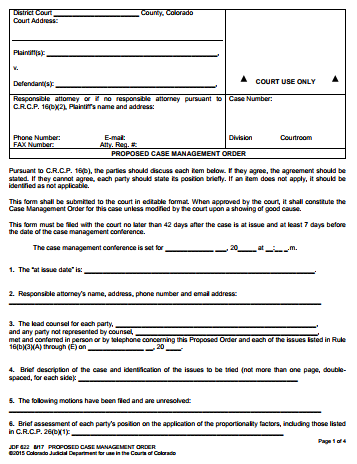
21 Jan Dealing With Electronically-Stored Information in the Case Management Order – Podcast
Today most of the data generated by companies is electronic, and that number grows bigger every year. With the increase in electronically-stored information or “ESI” has come the importance of a solid e-discovery plan in litigation. Not only must you and your attorney know how to process ESI, and what happens when you don’t properly manage ESI, you must know how to limit liability during the litigation process. This means your attorney should draft an ESI Agreement if necessary, a litigation hold letter, and a solid e-discovery plan for the parties’ case management order.
The culmination of your and your company’s efforts to properly manage and process electronically-stored information for litigation is the case management conference. The parties must come prepared to this court hearing with a “discovery plan” to produce and preserve electronically-stored information (among other forms of information).
The Case Management Conference
The rules of civil procedure have evolved to force parties and their lawyers to take serious consideration of their electronically-stored information during the discovery planning process. In Colorado state court, Rule 16 requires that the parties work together in setting what’s called a “case management conference”, and that they all participate in drafting a “case management order.”
A case management conference will not be necessary in every case, but the conference is available to the parties when needed. If your case involves a lot of electronically-stored information, it is in your best interest and the best interest of your company to partake in the case management conference because it gives you the opportunity to hash out with the court any discovery issues the parties may have from the inception of the case.
Regardless of whether you and the other parties take advantage of the case management conference, all parties are required to work together in drafting a case management order which, along with the trial management order drafted later in the case, will effectively govern the course of the litigation through the trial.
The Case Management Order
In Colorado state court, Rule 16(b) requires the parties to work together to draft a case management order, which sets forth among other things the agreement among the parties about the scope of discovery and any procedures that must be followed in order to ensure that the necessary discoverable information is properly maintained and produced.
The purpose of forcing the parties to agree to a discovery schedule and expense estimate very early on in the case is to help all parties and their counsel understand the magnitude of the expense and effort involved in the discovery schedule so that they are encouraged to cooperatively make decisions about propriety, feasibility, and possible alternatives (such as settlement or other means of obtaining the information).
This proposed order, when approved by the court, will control the course of the action from the time the case is “at issue” until otherwise required by the rules or modified by a party for cause. Here is a sample of the first page of a case management order:

Addressing ESI in the Case Management Order
Paragraph 15 of the case management order (not shown here) addresses electronically-stored information. If the parties anticipate needing to discover a significant amount of electronically-stored information, this section requires the parties to discuss and include in the proposed order a statement setting forth their agreements relating to (a) search terms to be used, if any, and (b) the production, continued preservation, and restoration of electronically-stored information, including the form in which it is to be produced and an estimate of the attendant costs. If you and your attorney cannot agree on these terms with other parties, the parties must explain their positions in the order and why they cannot agree. Disagreements are not uncommon but the parties should do their best to come to an agreement on how to maintain and produce ESI. However keep in mind that the court may not and should not simply “rubber-stamp” a proposed discovery schedule, even if agreed upon by counsel. The court is required to meaningfully review the order and ensure that the order serves its purpose—i.e., that it addresses among other things, any issues that may arise about the disclosure or discovery of ESI, including the form or forms in which ESI should be produced.
Because of the relatively short time frame between beginning your lawsuit and the case management conference, the process of locating, collecting, and preserving electronically-stored information must begin as soon as possible. By the time you and your attorney are required to attend the conference, you must be able to identify (a) the sources of your company’s electronically-stored information that are not likely to contain relevant documents, (b) the ESI that is not reasonably accessible, and (c) the locations and the forms in which responsive ESI is stored. If you and your company are having trouble with this process, do not wait until the conference to address them. Contact Edwards Law today for help with the e-discovery process.


No Comments